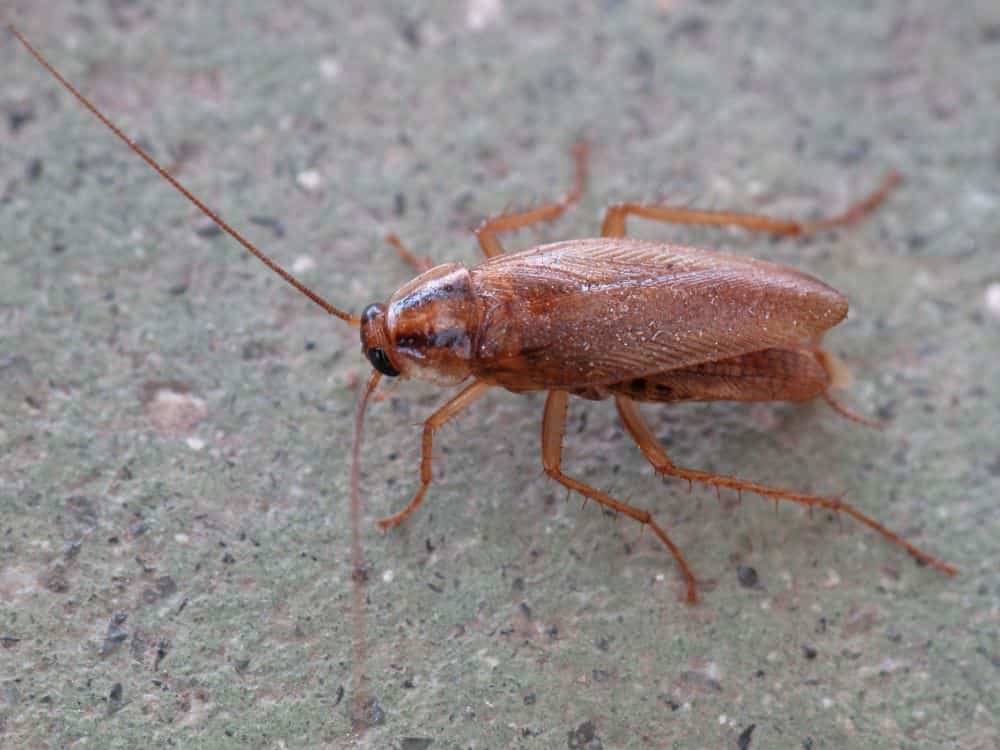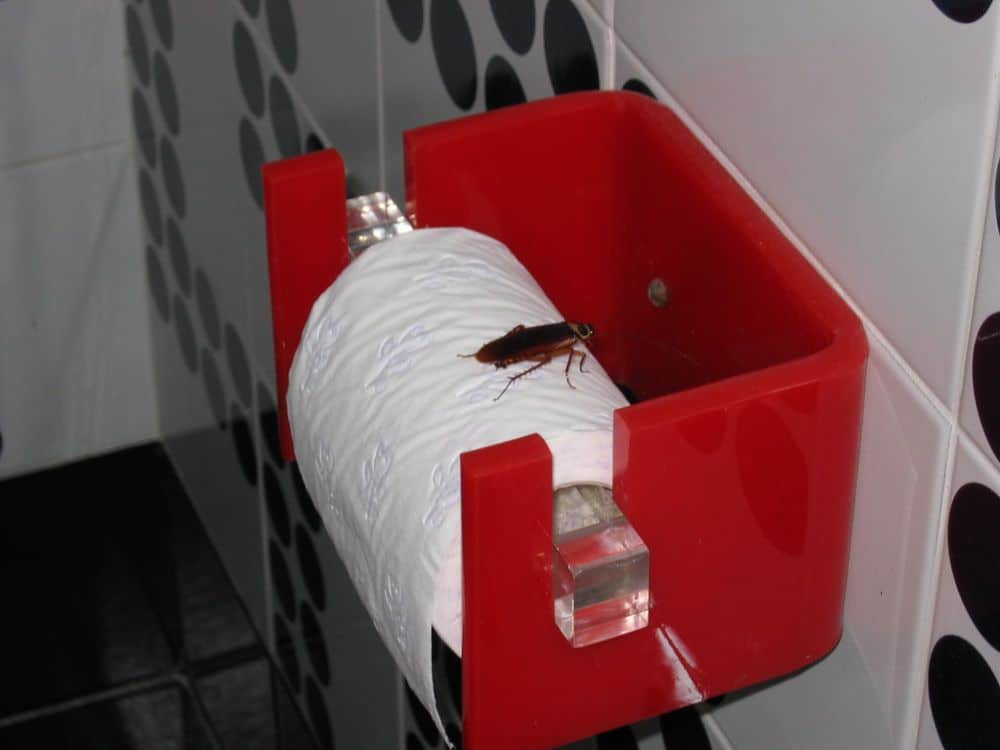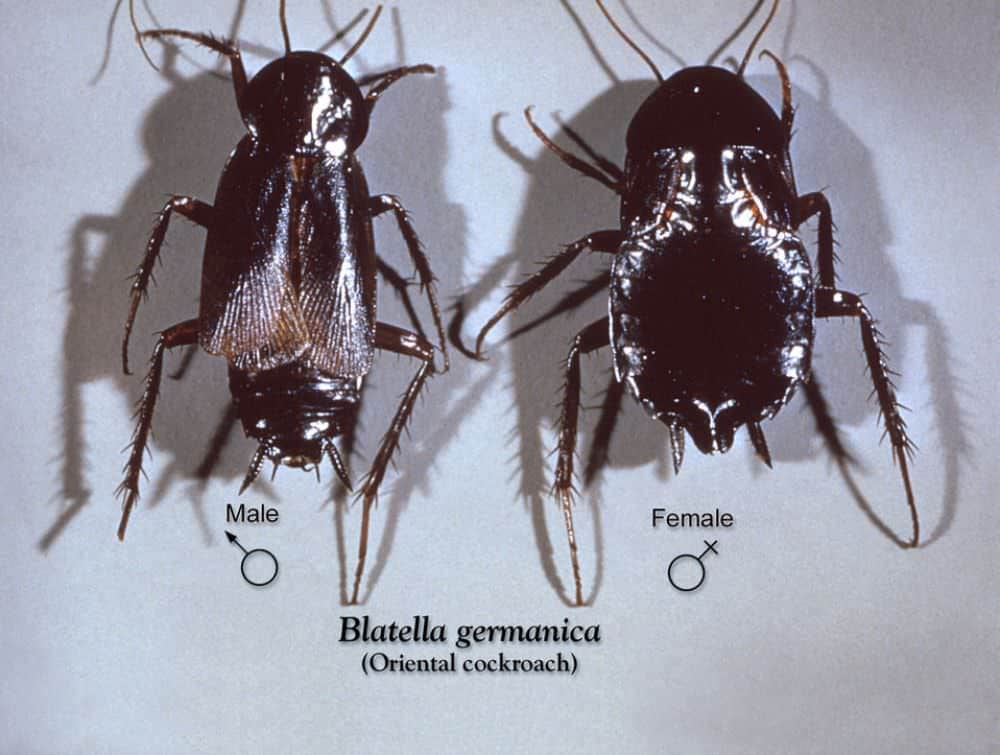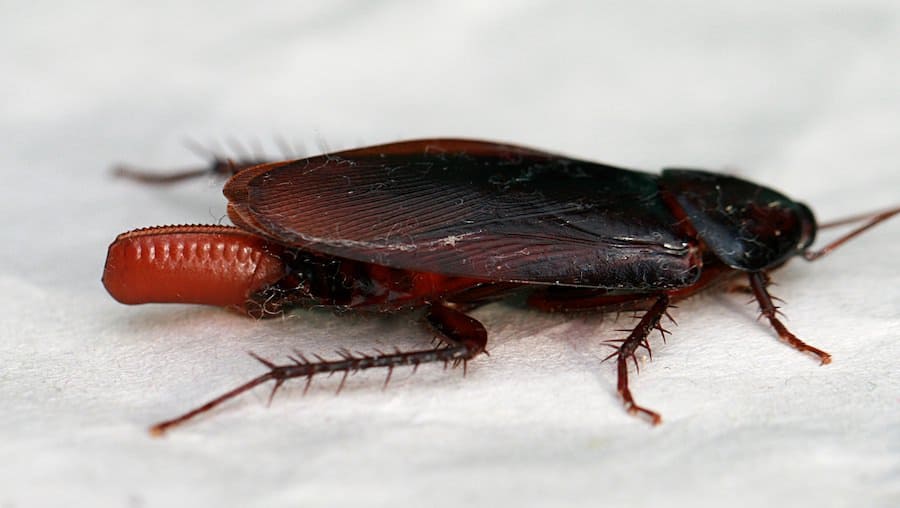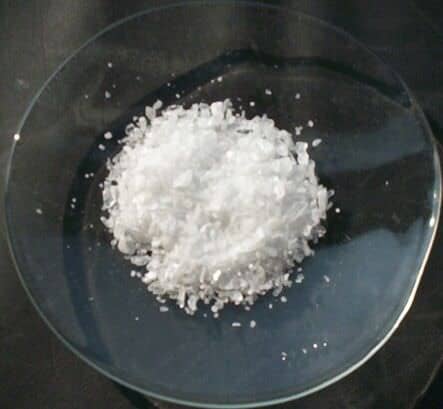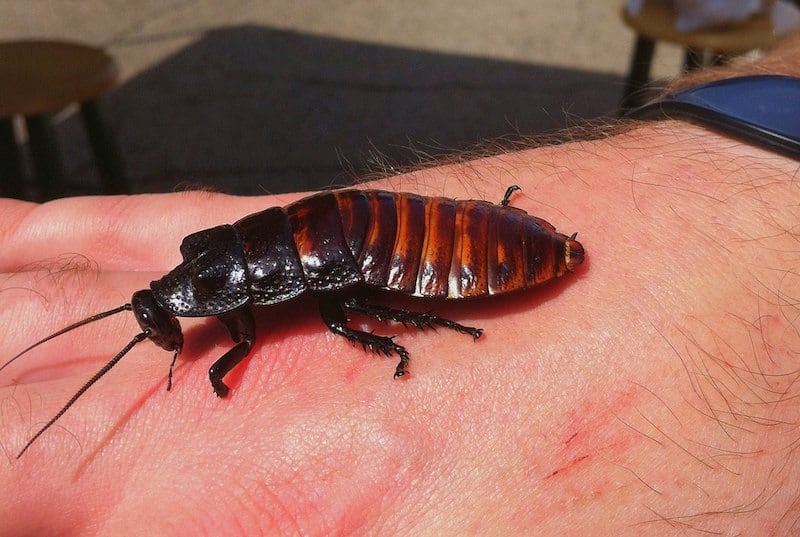Wood Cockroaches
There are over 3,000 cockroach species in the world. You might be surprised to know that not all of them are considered indoor pests. We often hear about the German and the American cockroaches. These species are commonly associated with infestation problems. Have you ever heard of the wood roach, though?
There are many fascinating things to learn about this species of cockroach. Wood roach habitats and habits are very different from those of our indoor pests. Want to know more? Let’s get started.
What Do Wood Roaches Look Like?
Wood roaches are considered a large species, yet they are actually smaller than the American cockroach. They measure an average of one inch, but can grow to be 1 1/4 inches.
The wood roach looks very similar to the American cockroach. It has a long, slender and flat body, long antennae, and very spiny legs. The wood roach lives outside, therefore, it needs extra long spines on its legs to help it grab on to different terrain.
Unlike the American cockroach, the wood roach is a chestnut-brown color, very deep in tone. The male cockroaches appear to be more of a tan color, though, that is only because of their wings, which have a light sheen.
Male wood roaches have two yellow markings which run down either side of the thorax. They also have long, fully developed wings, which usually extend beyond the body. The females have undeveloped wings which look like small pads—they are very similar to female oriental roaches.
Male wood roaches can fly long distances, although females aren’t able to fly at all as their wings are undeveloped.
The female wood roach can lay a significant number of eggs. A female can produce up to 950 eggs during her lifetime.
Wood roaches are no different from other cockroaches when it comes to the stages of their life. They have the same three stages in their life cycle; egg, nymph, and adult.
Let’s discover how their appearance changes on the journey from egg to adult.
Eggs
The cockroach eggs are kept within a casing, called an ootheca. Here they are stored safely until the embryos are ready to hatch. Wood roach oothecae have an adhesive substance on the outside. This is so that they can stick to any surface.
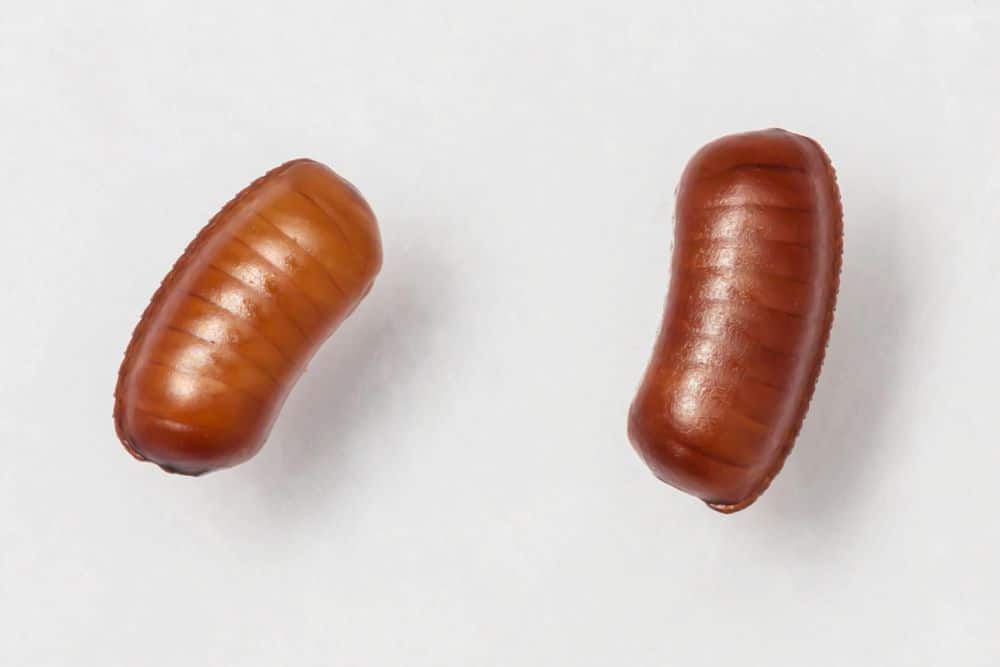
The wood females like to deposit their oothecae behind loose bark, tree stumps, or fallen logs. A wood roach ootheca has the same chestnut-brown color as the roaches, and is shaped a bit like a crescent. Each casing can hold up to 32 eggs.
Nymphs
Wood roach nymphs are typically a quarter of the size of adults. They start out with a tan color, which soon turns into a darker tone. The older nymphs, as well as the young adults, will have a dark-brown bottom half and a tan-colored top. These nymphs are very bulky looking, almost like a beetle. Compared to other cockroaches, wood roaches have a very long nymphal stage, which can last 10 to 12 months.
Adults
The wood nymphs are now fully grown adults ready for mating. Males and females look very different. The male looks similar to the American cockroach, while the female looks more like the oriental roach.
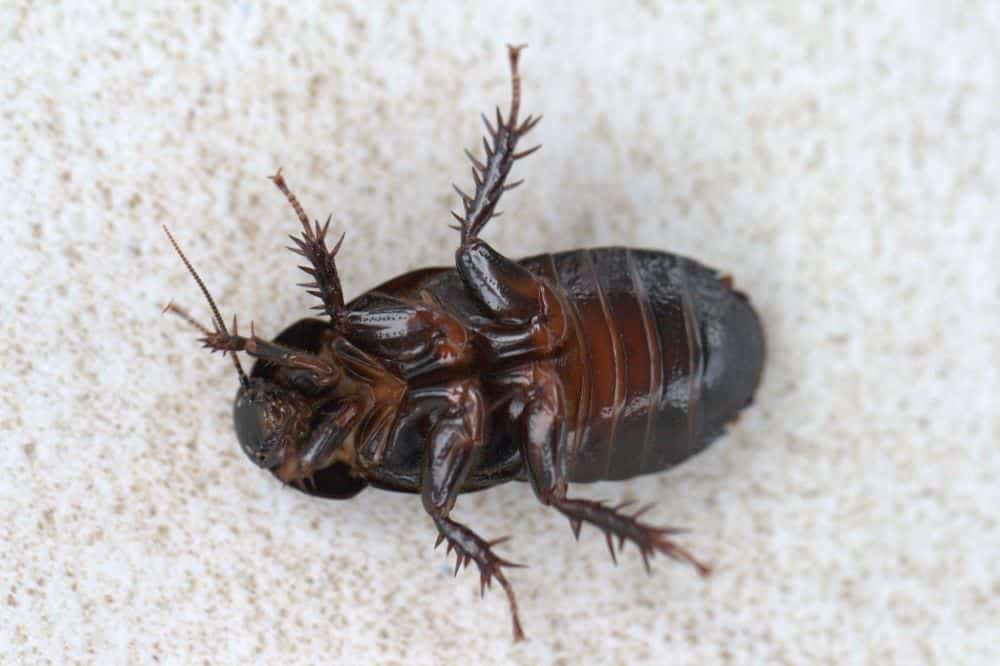
Wood roach adults are active throughout summer and winter. Cold weather doesn’t stop these bugs from living their lives. The roaches will crawl inside firewood to stay warm and safe.
Where Do Wood Roaches Live?
As the name suggests, wood roaches are outdoor insects. They are found in wooded areas throughout the southern, eastern and midwestern states. Wood roaches are very attracted to light. The males, which can fly short distances, are often found on car windscreens.
For humans, perhaps the best thing about these insects is that they rarely survive indoors. These cockroaches only come inside by accident. Wood roaches like to hide in old logs and firewood, which is then carried indoors by humans.
Wood roaches need a consistently moist environment to survive. They thrive in temperatures around 80 degrees, which is also the temperature the eggs need to develop.
Once they are inside a house, they won’t know where to go. These roaches aren’t afraid of people like other species are, therefore, you might see them casually wandering around. If you see one, try to guide it out carefully or leave a door open and it will surely find its way back outside.
Wood roaches do not feed on human food, these cockroaches are one hundred percent vegan. They only eat decaying organic materials, which is often old wood or leaves.
Although they don’t like to stay indoors, you might sometimes find them in your garage during mating season, which is May to June. Wood roaches, especially the males, can become a minor problem during this time. They will scatter around looking for potential female mates.
The males will often travel in groups. This can become a nuisance during warm summer afternoons.
How to Get Rid of Wood Roaches
As mentioned, wood roaches are outdoor insects, they don’t have any desire to be indoors. Because of this, these cockroaches are rarely viewed as problematic to people. Unless you live in a log cabin, that is.
Owners of summer cottages, which are often made out of wood, have reported a few problems involving this species. Leaving the cabin unattended during the cold months often results in a few uninvited house guests moving in.
A house made of wood can look a lot like a fallen tree to these cockroaches. Dead trees are their favorite spot to settle in, providing food, shelter and just enough warmth to make them comfortable.
Wood roaches will most likely be found on the outside of wooden buildings, or tucked into crevices in the side. They are least likely to inhabit the kitchen cabinet, unlike other species of cockroach.
We might stumble upon a couple of these roaches during summer. If you see one, don’t worry. You can simply pick it up using whatever tool you are comfortable with. When using a vacuum cleaner to remove roaches, remember to empty the bag outside at a distance to the house. Don’t leave a live roach inside the vacuum bag.
I recommend collecting the roaches with a broom and dustpan and then discarding them outside. Wood roaches are not a biting cockroach, thus this is nothing to be concerned about.
Most often it is not necessary to use pesticides indoors, these roaches will not begin to nest inside a house. You can treat the outside of your house and the surroundings with insecticide if you feel that the roaches are becoming a problem.
Here are a few measures to take if you want to prevent these roaches from coming inside the house accidentally:
Limit Openings
Wood roaches love night lights, that means they will be attracted to a well-lit house in the evenings. They might follow their desire and wander into your home. I recommend sealing any wall or roof cracks and crevices with a caulking compound.
Make sure all doors and windows are fitted tightly to the frames. Having even a small space between the floor and door could invite a wood roach in. Install bug screens to the windows if you want to keep them open at night. Attach a brush strip to the bottom of the doors, these will close any gaps but slide easily as the door opens and closes.
Keep Firewood Outside
Firewood is one of the wood roaches’ favorite hiding places. Keeping large amounts of it in your house could be a potential mistake. Some people like to store firewood inside from season to season. These wood piles can become breeding sites.
A solution would be to set aside a small outdoor area to store firewood. Even then, it should be kept at a distance from the house. Only bring the wood inside when you are going to use it on the fire.
Limit Outdoor Lighting
Avoid leaving outdoor lights on if they aren’t necessary. Male wood roaches love lights, especially during mating season. They will fly towards any light during the time around dusk and early evening.
Keep the Yard Tidy
Keeping your yard tidy is the best way to prevent any unwanted insects, including wood roaches. Remove all fallen leaves, these create a moist area for the roaches to stay. Clean out the rain gutters, make sure there aren’t any leaves clogging them up.
Stop any water leaks. If you have any objects in the yard that collect water, turn it over or cover it. Woodpiles should be moved far away from the house too. A wood roach will happily set up home and breed in these places.

